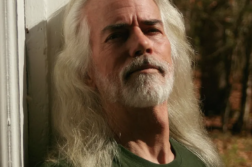AFTER SEVENTEEN YEARS as an activist for the American Civil Liberties Union in San Francisco, Marcia Gallo started graduate school at the City University of New York, working with Martin Duberman and other luminaries at the center for lesbian and gay studies. Ten years later, at the age of 55, Marcia has published the results of her research, Different Daughters: A History of the Daughters of Bilitis and the Rise of the Lesbian Rights Movement (Carroll & Graf).
The DOB was the first lesbian organization in the U.S., founded by Phyllis Lyon and Del Martin in San Francisco in 1955. Taking its name from the lesbian-themed “Songs of Bilitis” by French poet Pierre Louÿs, the DOB would soon start publishing a monthly magazine, The Ladder, which helped organize a national lesbian readership and eventually a political movement. Gallo’s book, which is the first full-length history of the DOB, is based on the author’s intensive archival research and interviews with surviving members of the group.
I conducted this interview with Marcia in my apartment in Manhattan in November 2006.
— Sarah Schulman






